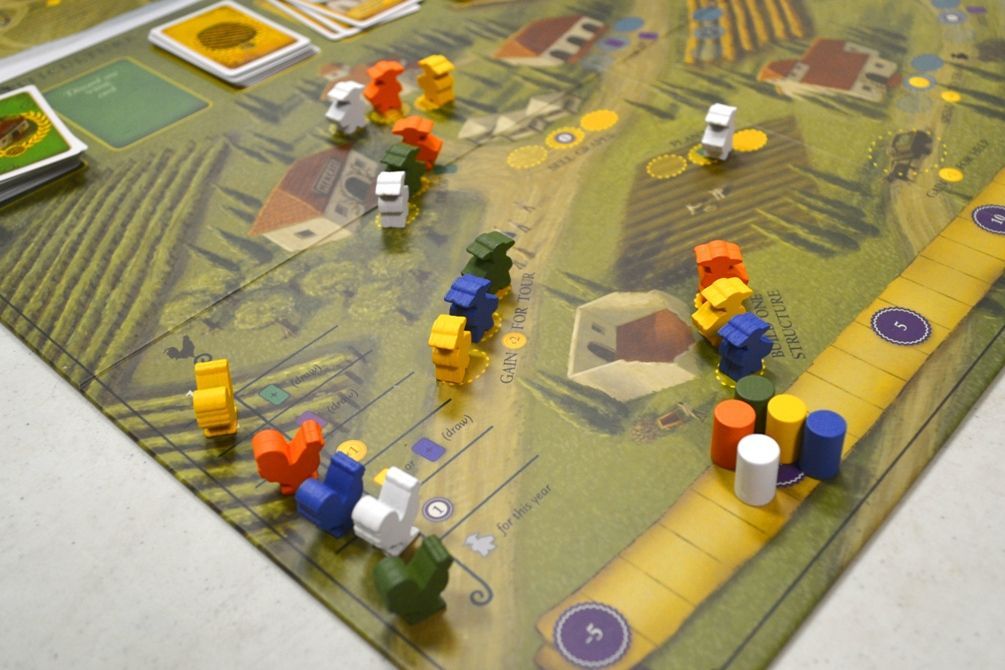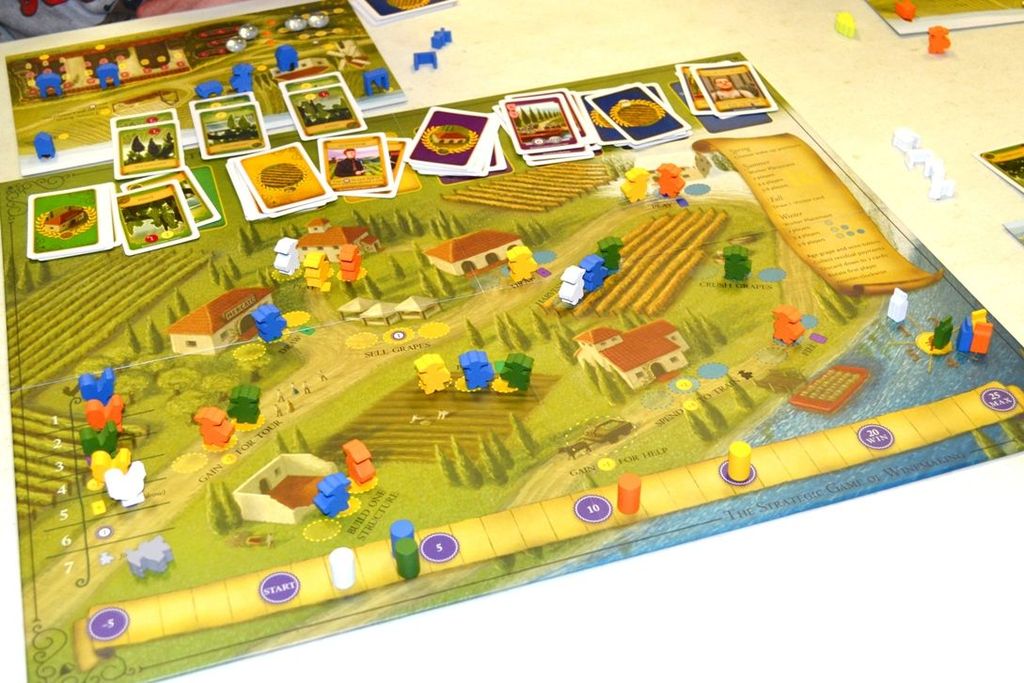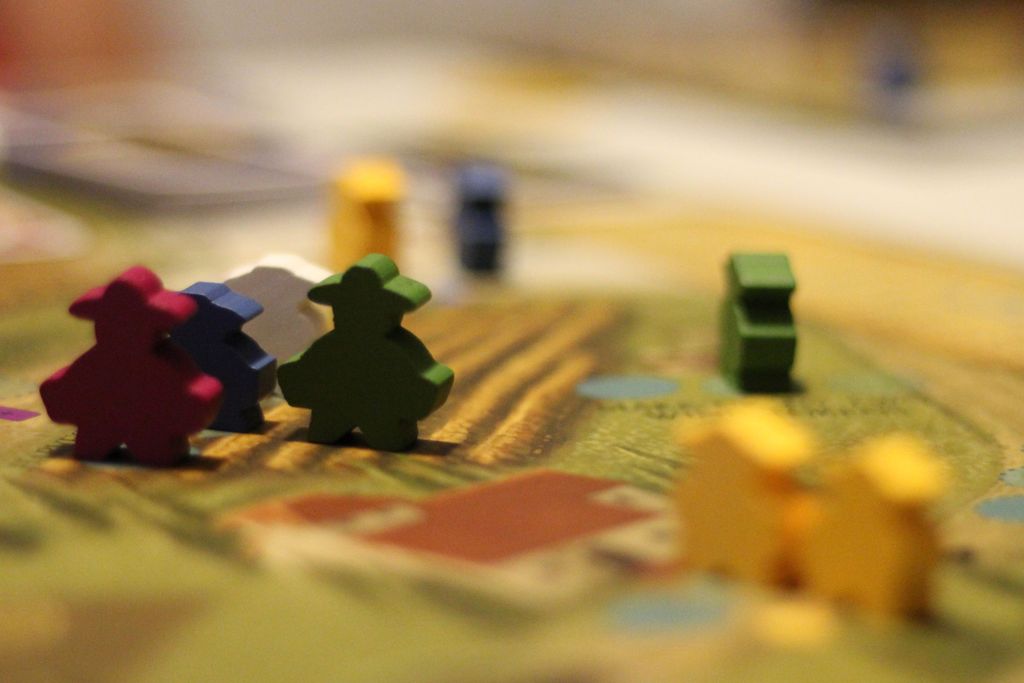Overview
Welcome to our review of the game Viticulture! In this review, we will take an in-depth look at the gameplay mechanics, strategy and decision-making, as well as the component quality and artwork of this popular board game. As avid board game enthusiasts, we understand the importance of these factors in enhancing the overall gaming experience. So grab a glass of fine wine, and let’s dive into the marvelous world of Viticulture!
How It Plays
Setting up
To begin playing Viticulture, each player is given a vineyard board, which represents their winery. The game also includes vineyard cards, workers, wine cellars, and various other components. These components are placed according to the setup instructions, creating a unique vineyard for each player.
Gameplay
During each round, players take turns performing actions such as planting grape vines, harvesting grapes, and transforming grapes into wine. The actions are selected by placing workers on action spaces on the game board. Each action has different benefits, allowing players to strategically manage their vineyard and wine production.
Winning the game
The game ends when a certain number of seasons have been played. Points are accumulated throughout the game based on various achievements, such as building structures, fulfilling wine orders, and hosting visitors. The player with the most points at the end of the game is declared the winner.
Want to know more? Read our extensive strategy guide for Viticulture.
Engaging and Dynamic Gameplay Mechanics
Viticulture offers players a captivating gameplay experience that revolves around the art of winemaking. The mechanics are seamlessly integrated, creating a cohesive and immersing gameplay environment. At its core, the game focuses on managing a vineyard and making the most out of limited resources. Each player takes on the role of a winemaker, making strategic decisions to expand their vineyard and produce the finest wines.
Innovative Worker Placement
One of the standout mechanics in Viticulture is its innovative worker placement system. Players take turns assigning their workers to various locations on the board, such as planting vines, harvesting grapes, or taking orders from visitors. The placement of workers is a vital aspect of the game, as it determines the actions available to players and can heavily influence their success. This dynamic mechanic keeps players engaged and encourages thoughtful decision-making.
Unique Card-driven Gameplay
What sets Viticulture apart from other games in the genre is its unique card-driven gameplay. Players utilize a variety of cards that represent different aspects of winemaking, such as irrigation systems, wine orders, and specialized workers. These cards not only provide strategic opportunities but also introduce an element of variability and surprise. This adds depth and replayability to the game, ensuring that each playthrough feels fresh and exciting.
Strategic Planting and Harvesting
Planting and harvesting grapes are fundamental activities in Viticulture, requiring players to carefully plan their actions. Decisions such as which types of grapes to plant, when to harvest, and when to age the wine all have significant implications for a player’s vineyard and overall success. This strategic layer adds a satisfying depth to the gameplay, fostering critical thinking and long-term planning.
Moving on to Savor the Strategy and Decision-Making
Now that we have explored the engaging gameplay mechanics of Viticulture, let’s dive into the immersive world of strategy and decision-making, where players embody true winemakers seeking fame and fortune…

Experience strategic decision-making at its best
When it comes to strategy and decision-making, Viticulture excels in providing players with a deep and engaging gaming experience. From the moment you start playing, you’ll find yourself faced with a multitude of choices and opportunities to strategically plan your winemaking empire.
Resource Management
One of the key aspects of strategy in Viticulture is efficiently managing your resources. You need to balance between planting and harvesting grapes, acquiring vineyard expansions, and managing your money and workers. Every decision you make has consequences, encouraging thoughtful planning and creating a sense of tension and excitement.
Worker Placement
Viticulture incorporates a worker placement mechanic that adds another layer of strategy to the game. Each turn, you’ll need to strategically allocate your workers to different locations on the board, each offering different benefits and actions. This requires careful consideration and anticipation of your opponents’ moves, as the available spots may quickly become limited.
Strategic Card Play
Cards play a crucial role in shaping your strategy in Viticulture. The game features a deck-building component where players can acquire powerful cards that provide unique abilities and advantages. Building a strong card engine can give you a competitive edge and open up different avenues for scoring points.
With the myriad of strategic choices and decisions to make, Viticulture ensures a dynamic and engaging gameplay experience that keeps players coming back for more. But strategy is not the only remarkable aspect of this game. Stay tuned for the next section, where we explore the immersive world of Viticulture’s component quality and artwork.

Viticulture is a board game that offers a captivating gameplay experience, with its intricate mechanics and engaging gameplay.
Gameplay mechanics
Smooth and intuitive
The gameplay mechanics of Viticulture are smooth and intuitive, making it easy for players to understand and enjoy the game. The actions and turns flow effortlessly, creating a seamless gaming experience.
Diverse strategies
With a wide range of options and choices available, players have the freedom to develop diverse strategies in Viticulture. Whether it’s focusing on vineyard expansion, wine production, or fulfilling orders, each decision matters and can lead to different outcomes and paths to victory.
Interaction and competition
One of the highlights of Viticulture is the level of interaction and competition between players. From blocking opponents’ actions to strategically timing moves, the game keeps everyone engaged and on their toes. The balance between cooperation and competition adds an exciting dynamic to the gameplay.
The next section will delve into the strategic and decision-making aspects of Viticulture, which further contribute to its appeal.
Strategy and decision-making
Strategic planning
Viticulture challenges players to think strategically and plan ahead. Every decision, such as which cards to choose, which orders to fulfill, and when to age your wines, can greatly impact your success in the game. Balancing short-term gains with long-term goals is key to achieving victory.
Risk assessment
Throughout the game, players constantly need to assess risks and rewards. From investing in vineyards to deciding when to plant specific grape varieties, each choice comes with its own set of potential benefits and consequences. Choosing wisely is crucial to staying ahead of the competition.
Adapting to changing circumstances
In Viticulture, players must adapt their strategies as the game progresses. Weather conditions, visitor cards, and the actions of opponents can significantly influence the course of the game. Being flexible and adjusting your plans accordingly is vital for success.
The next section will explore the high-quality components and artwork that enhance the immersive experience of Viticulture.
Component quality and artwork
Viticulture is a visual treat, with beautifully designed components that add to the game’s overall charm.
Stylish design
The components, from the board and player mats to the cards and tokens, feature a stylish and appealing design. The attention to detail is evident, creating a visually pleasing and immersive experience for players.
Durable and well-made
The components of Viticulture are durable and well-made. The thick cardboard pieces and sturdy player components ensure that the game can endure countless playthroughs without wear and tear.
Artwork that captures the theme
The artwork in Viticulture perfectly captures the rustic charm and ambiance of winemaking. The beautiful illustrations help to draw players into the world of vineyards and wine, enhancing the overall thematic experience of the game.
In conclusion, Viticulture excels in its gameplay mechanics, strategic depth, and high-quality components. I highly recommend this game to both board game enthusiasts and those looking to explore the world of viticulture and winemaking.

Conclusion
After thoroughly examining the gameplay mechanics, strategy and decision-making, as well as the component quality and artwork of Viticulture, we can confidently conclude that this game is a must-have for any board game enthusiast. The captivating gameplay mechanics offer depth and replayability, allowing players to engage in strategic thinking and satisfying decision-making. The high-quality components and stunning artwork further enhance the immersive experience. Viticulture truly embodies the essence of managing a vineyard, making it an enjoyable and engaging game for players of all skill levels. In conclusion, we highly recommend adding Viticulture to your board game collection!


